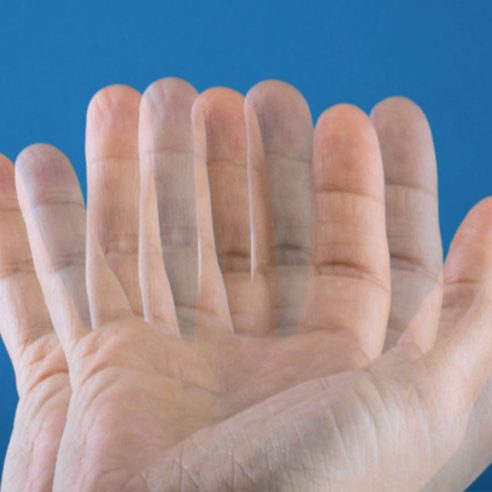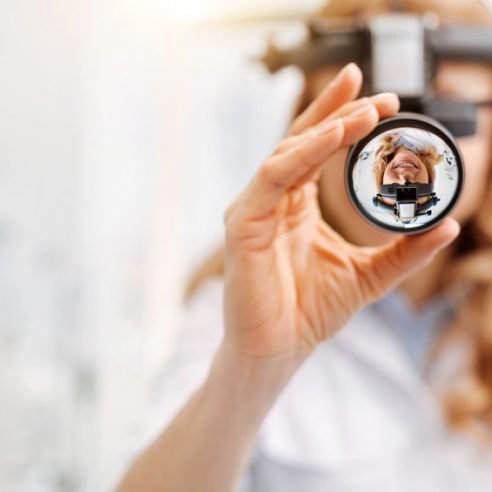
Nystagmus: Types, causes, and treatment
Nystagmus is an eye condition in which the eyes make repetitive and uncontrollable movements. People with nystagmus may hold their heads in unusual positions or nod their heads in certain ways, to compensate for the problem.
Generally, nystagmus is a symptom of another eye or medical condition. There is no exact number of patients suffering from this disease, but a recent study shows that between 6 and 24 people out of every 10,000, have a form of nystagmus. The most common are neurological nystagmus, nystagmus associated with vision loss (Ex. congenital cataract ) and nystagmus associated with retinal diseases (Ex. achromatopsia).
Find out what nystagmus is, how it manifests, and what treatment options exist.
Nystagmus: What does it mean?
Nystagmus is an ophthalmological problem where the eyes make rapid, repeated, and uncontrolled movements.
The brain and structures in the ear control eye movement. The structures form the vestibular system, which automatically adjusts the position of the eyes when you move your head, so that the image you see remains in focus. In people with nystagmus, there is a problem that prevents this collaboration – between the brain, vestibular system, and eyes.
This can cause problems regarding the quality of vision, perception of the depth of the visual field, balance, and coordination.
Nystagmus types
Nystagmus affects both children and adults.
Depending on the age at which it manifests, there are two types of nystagmus: congenital or infantile (appears at birth or in the first months of life) and acquired (appears after the age of 6 months).
1. Congenital or infantile nystagmus
Babies born with nystagmus usually show symptoms between 6 weeks and 3 months of life. Sometimes, parents pass nystagmus to their children, but the cause is not always clear.
Children with congenital nystagmus often have it in both eyes. Their eyes usually move from one side to the other. The main symptom is blurry vision.
2. Acquired nystagmus
Acquired nystagmus appears later in life and is more common in adults.
Nystagmus can be a symptom of a medical condition that affects the brain, eyes, or ears. It is also possible to not be related to any disease and to just be the way a person’s body functions.
Sometimes, nystagmus results from the consumption of alcohol and drugs. Adults with acquired nystagmus often describe their vision as being blurry.
Depending on the eye movements, it can be:
- Vertical nystagmus (eyes move up and down)
- Torsional/rotational nystagmus (eyes mimic the movement of a pendulum)
- Horizontal nystagmus (the eyes move from right to left)
- Jerk nystagmus (the eyes move in one direction, then make a jump in the opposite direction)
Nystagmus: Causes
Nystagmus could indicate another ocular, neurological condition, or a problem with the inner parts of the ear, which control balance and coordination.
The causes and risk factors of nystagmus are:
- Developmental problems of the brain or eye
- Conditions of the retina or optic nerve
- Inner ear disorders (Ex. benign paroxysmal positional vertigo or Ménière’s disease)
- Stroke
- Brain tumor
- Eye injury or head injury
- Alcohol or drug use
- Albinism (lack of skin pigmentation)
- Vision problems, including myopia or astigmatism
- Certain medications (e.g., antiepileptics)
- Diseases affecting the central nervous system (e.g., multiple sclerosis)
- Eye problems in infants (e.g., strabismus, focusing problems, and cataract)
When the cause is unclear, the condition is diagnosed as idiopathic nystagmus.
Nystagmus: Symptoms
The main sign of nystagmus is the uncontrollable movement of the eyes. This can affect one or both eyes. Other symptoms depend on the underlying issue and can include:
- Objects that appear blurry and shaky
- Vision problems during the night
- Sensitivity to light
- Imbalance
- Dizziness
- The feeling that the surrounding environment is moving
Nystagmus diagnosis

Nystagmus can be diagnosed through an eye examination. The consultation will focus especially on the way the eyes move.
- The patient’s history is thorough into to explain the symptoms or the presence of general health issues. Other aspects taken into account are medications currently being taken and environmental factors that may contribute to the development of nystagmus.
- Measuring visual acuity evaluates to what extent vision is affected.
- The refraction test determines the power needed by the lens to compensate for any refractive error (myopia, hypermetropia, or astigmatism).
- It will also observe how the eyes focus, move, and work together. To obtain a single clear image of an object, the eyes must efficiently change focus, move, and work in unison. This ophthalmological investigation will look for problems affecting the control of eye movements or making it difficult to use both eyes simultaneously.
Since nystagmus is often the result of other underlying health issues, an ophthalmologist might recommend consulting another specialist for further tests. These may include an ear examination, a neurological examination or an MRI. Based on the results, it is determined whether the patient has nystagmus and treatment is established.
Nystagmus treatment
In some cases, the brain and vestibular system compensate for the injuries, and nystagmus disappears or decreases in intensity over time, but in principle, correction is done by treating the underlying medical condition. For example, treating a problem with the inner ear can improve symptoms of nystagmus such as shaky vision or dizziness.
The doctor will consider the patient’s medical history and personal preferences when establishing the treatment for nystagmus.
Glasses for nystagmus
A clearer vision can help slow down the rapid eye movements associated with nystagmus. The doctor may recommend glasses or contact lenses to manage the symptoms. You may need prism lenses, which limit eye movement in order to see clearly.
Medications
Some medications can reduce the symptoms of nystagmus in adults, such as antiepileptics, muscle relaxants, and onabotulinumtoxinA. All of these must be recommended by a specialist doctor before administration.
Surgical intervention on the eye muscles
In extremely rare cases, the doctor may recommend surgery for strabismus. During this procedure, a surgeon repositions the muscles that move the eyes. It’s important to note that this ophthalmological surgery does not cure nystagmus, but it improves eye movement. Patients will no longer have to turn or tilt their heads so much to see clearly.
Corrective eye surgery
Those who have both nystagmus and are also myopic, can opt for laser surgery. In the network of Dr. Holhoș clinics, there are 4 technologies in this regard: laser surgery with Excimer PRK, laser surgery with FemtoLASIK, laser surgery with ReLEx SMILE, and laser surgery with SMILE PRO. None of these procedures cures nystagmus 100%, but it significantly improves the quality of vision and reduces the symptoms of the disease.
Tips for living with nystagmus
There are a few things you can do at home to lessen the symptoms of nystagmus.
- Choose books with large font or increase the text size on your phone, tablet, or laptop.
- More light when reading can help.
- For children with nystagmus, large and colorful toys that make noise or have unique textures, are most suitable.
- Allow the child to hold the books close to their eyes, with their head tilted. Let them wear a hat or glasses – even indoors – to reduce light reflections.
Nystagmus can be hereditary, but also acquired, in which case it may signal another medical condition. If you notice symptoms of this disease in yourself or someone dear, it’s time for an ophthalmological examination, to determine the cause and the measures that need to be taken for treatment.






























